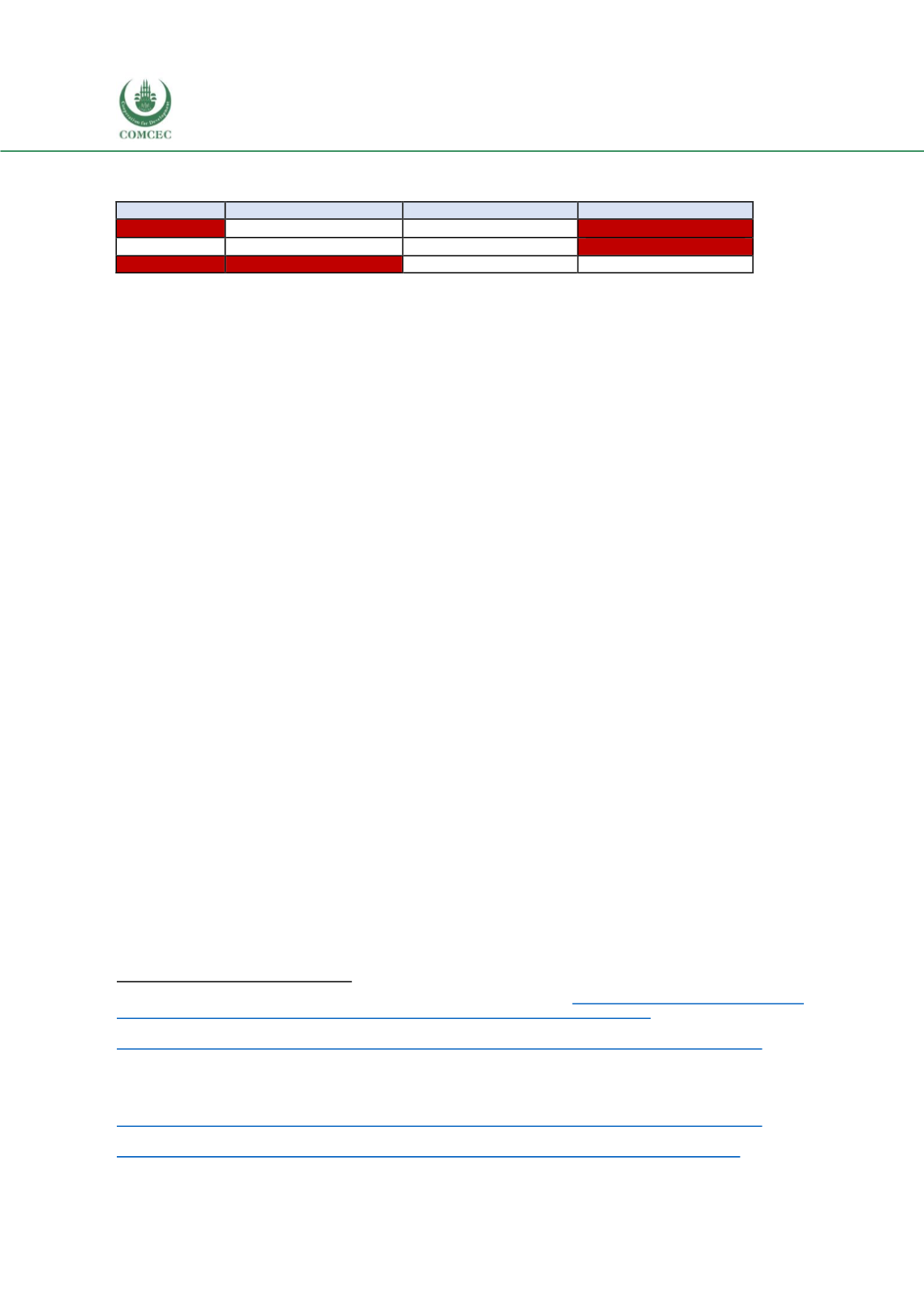

Increasing the Resilience of the Food Systems
In Islamic States in Face of Future Food Crises
72
Table 40: Summary of areas of vulnerability in the Irish food system (highlighted in the
table)
Availability
Access and Affordability
Utilization
Stability
Production
Transportation
Food Safety
Availability
Reserves
Market Infrastructure
Care & Feeding Practices
Access
Imports
Purchasing Capacity
Health &Sanitation
Utilization
Source: DinarStandard Analysis
While famines are now in the past for Ireland, the country still faces significant threats to its
food security. Environmental drivers pose the greatest threat to Irish food security; climate
change is expected to affect all aspects of agriculture in Ireland due to changes in air and soil
temperature, and because of rainfall patterns causing water and heat stress for crops and
animals. Ireland's coastal areas face increasing threats from coastal erosion and flooding which
can compromise infrastructure in these areas. Most of Ireland’s power stations, oil refineries
and storage facilities are located on the coast, so will be endangered by this.
275
Climate change is also predicted to have serious repercussions on food safety in Ireland. With
the predictedwarmer and wetter conditions, pathogen growth is expected to increase cases of
food contamination. Animal disease that requires the use of medicines is likely to transmit
chemical residue into the food chain. Intense rainfall can increase the risk of heavy metal
contamination from soil or bedrock, affecting the grass-fed cattle production of Ireland.
276
Political drivers, mainly the risk of a no-deal Brexit, pose a threat of Irish farmers’ livelihoods
and to food security generally. With the expected decline in Irish agri-food product exports to
the UK as a result of imposed tariffs in the event of a no-deal Brexit, Irish farmers’ income will
be potentially negatively affected. As the UK is also a major contributor to the EU budget, which
finance the CAP budget, there is also expected to be a significant decrease in those budgets
starting in 2020. These reductions will lead to decreased assistance for Irish farmers in
combination with new export barriers, which will impact the agri-food sector and farmers’
livelihoods negatively.
277
With respect to economic food insecurity drivers, crop price volatility also threatens food
security in Ireland, as it depends on exported fodder and feed. Most recently, in 2012-2013, the
increase of fodder prices had severe effects on farm income and farmers.
278
In terms of social
food insecurity drivers, the 2017 survey on income and living conditions in Ireland indicated
that 1.2 million people experienced deprivation, with 395,000 children living in deprived
households. The survey findings also showed that, without social welfare payments, around 4%
of the population would live in poverty.
279
275
DCCAE. (2018,, January 19). National Adaptation Framework. Retrieved fro
m https://www.dccae.gov.ie/en-ie/climate- action/topics/adapting-to-climate-change/national-adaptation-framework/Pages/default.aspx276
Safefood. (2017, February). The impact of climate change on dairy production. Retrieved from
https://www.safefood.eu/Publications/Research-reports/The-impact-of-climate-change-on-dairy-production.aspx277
Mason Hayes & Curran. (2018, September 15). Food & Beverage Update: The Impactof Brexit on the Agricultural and
Fishing Industries. Retrieved
fromhttps://www.mhc.ie/latest/insights/food-beverage-update-the-impact-of-brexit-on-the-agricultural-and-fishing-industries
278
Safefood. (2017, February). The impact of climate change on dairy production. Retrieved from
https://www.safefood.eu/Publications/Research-reports/The-impact-of-climate-change-on-dairy-production.aspx279
Social Justice Ireland. (2017, February). Median incomes increase but numbersin poverty still worrying. Retrieved from
https://www.socialjustice.ie/content/policy-issues/median-incomes-increase-numbers-poverty-still-worrying















